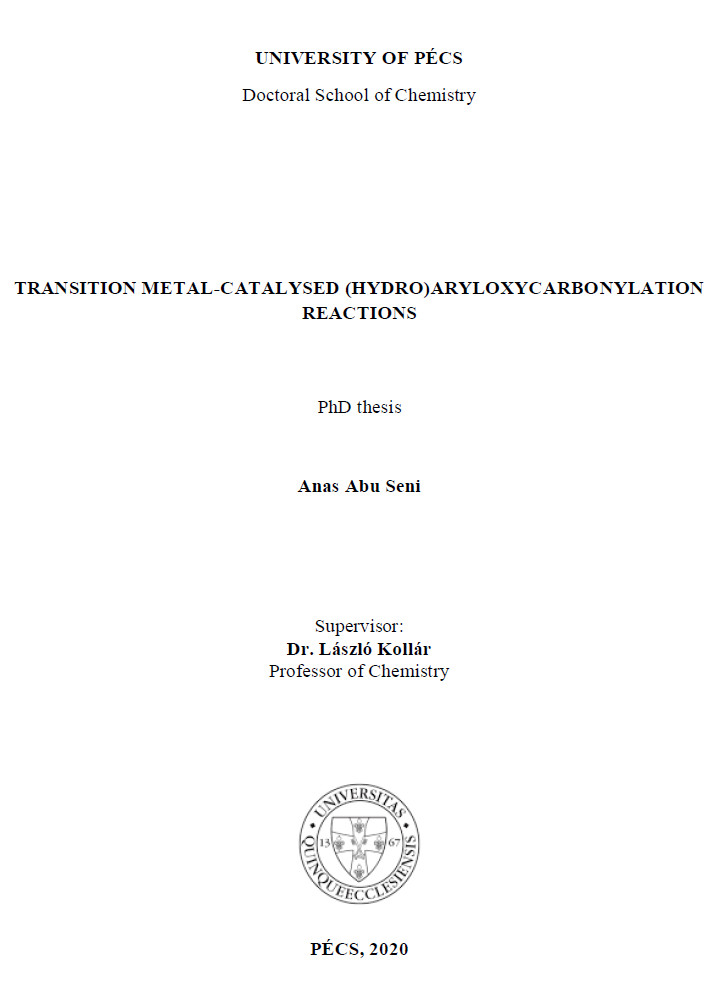Transition metal-catalysed (hydro) aryloxycarbonilation reactions
Abstract
Catalysis introduces a fundamental and crucial basis for both academic and industrial sectors. Fine and bulk chemicals productions are enriched by the involvement of both homogeneous and heterogeneous catalysis. Starting from eighties, the number of homogeneously catalysed reactions has been growing steadily. When the catalyst systems, the substrates and the required components to perform a chemical reaction are brought together into one phase, most often the liquid phase, then the expression “homogeneous catalysis” is applied. Transition metal-containing compounds which are applicable for homogeneously catalysed reactions could be either organometallic or non-organometallic compounds. An advantage for using transition metal-containing compounds as catalysts is that they can be tuned by changing the ligand environment. Accordingly, several catalytic systems can be obtained. A very important class of compounds in organic chemistry is that the one which contains carbonyl groups in their structures such as aldehydes, ketones, carboxylic acids and their corresponding derivatives like esters, amides, acid anhydrides and acid chlorides. Fortunately, the aforementioned compound classes can be prepared according to homogeneous catalysis approach, specifically, by conducting carbonylation reactions which incorporated in the introduction of at least one CO group to the structure of reacted substrates [1]. Hence the carbonylation reactions are of great importance due to their utilization in the synthesis of carbonyl moiety-containing organic compounds [2-4]. The preparation of various compounds containing CO moiety under carbonylation reaction conditions makes this reaction to be considered as an elegant synthetic pathway.
The production of fine chemicals from olefins using carbonylation reaction approach is of great importance [5]. Additionally, the preparation of optically active compounds that can serve as intermediates or building blocks in pharmaceutical industry can be afforded and introduced by carbonylation reaction of unsaturated olefins [1]. For example, when the substrate 4-isobutylstyrene is treated with carbon monoxide and water, the product that is achieved under carbonylation process is 2-(4-isobutylphenyl)propanoic acid (commonly named ibuprofen), a very important nonsteroidal anti-inflammatory drug (NSAID). Related drugs such as naproxen, ketoprofen and fenoprofen can be prepared by the same synthetic approach [6]. The structure of these drugs and the general equation for the formation of one of these derivatives, ibuprofen, can be seen in Scheme 1 and 2, respectively.

